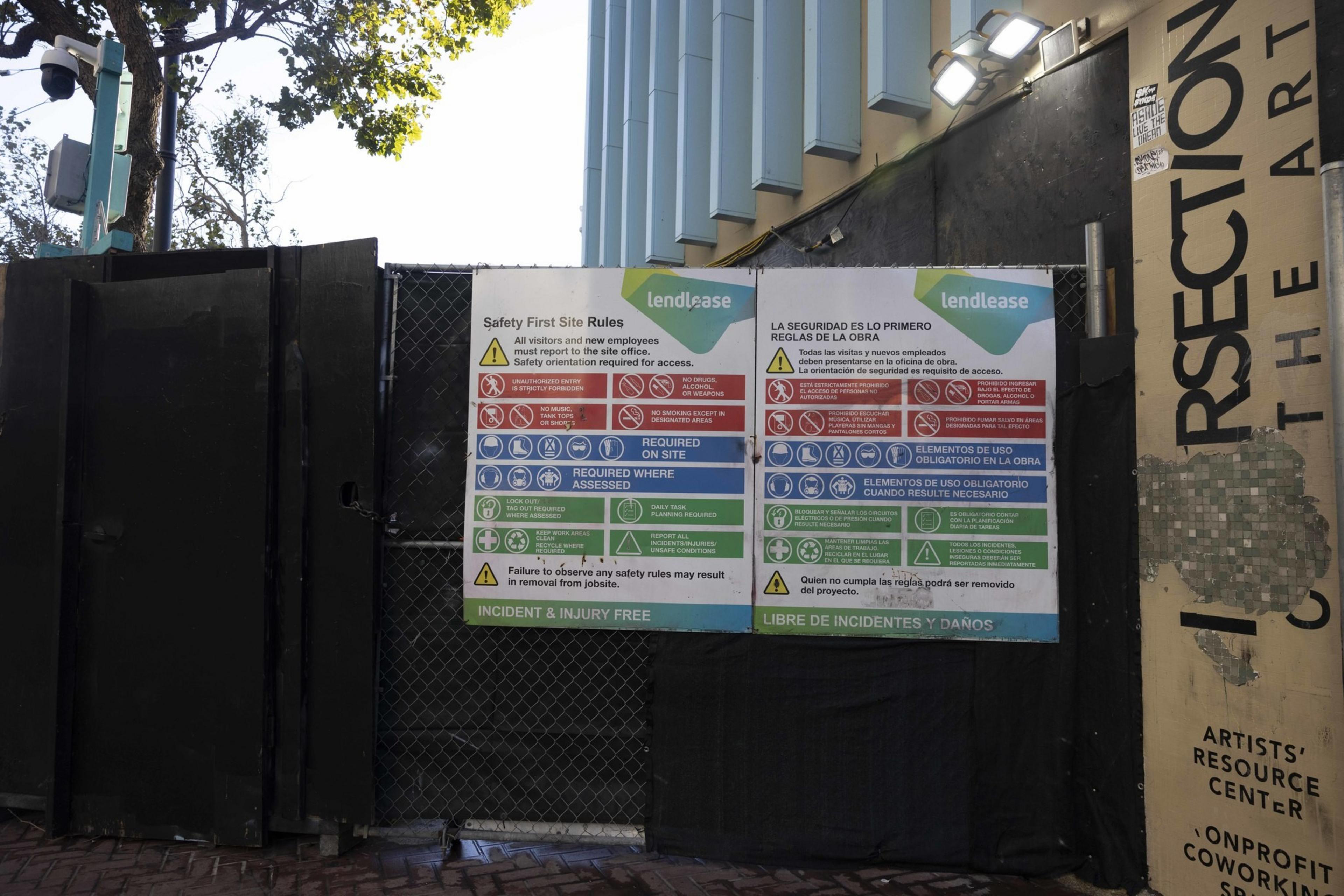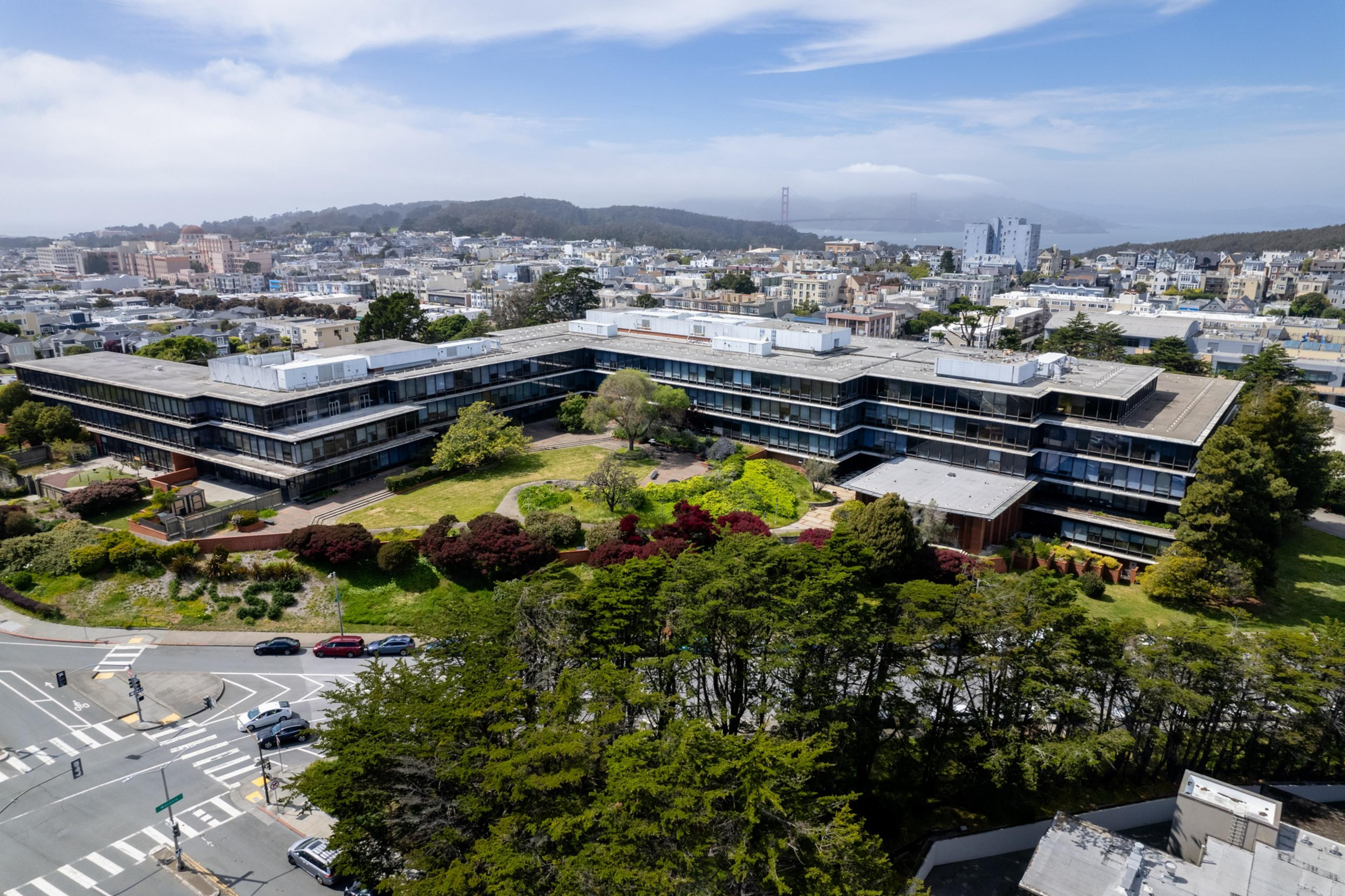Prior to the pandemic, the general consensus in San Francisco was that if a developer ever wanted to break ground they would have to pay handsomely up front in the form of fees and public infrastructure improvements.
But four years into a flagging recovery and battered commercial real estate market, the Board of Supervisors and city leaders are now increasingly collaborating with real estate developers to ease up on those commitments and juice a lethargic housing pipeline.
Take the unfinished, now quiet construction site at 30 Van Ness Ave. In 2022, Australian developer Lendlease broke ground on Hayes Point (opens in new tab), a 47-story mixed-use building, which promised to deliver more than 300 condos atop office space and ground-floor retail.
When the proposal was first approved, 25% of those homes were earmarked as below-market rate. But after the federal interest rate spiked that summer, construction on the project froze because of rising costs. Earlier this May, Lendlease put the unfinished project up for sale after announcing it was pulling back from overseas construction, according to regulatory filings.
Recognizing that an exit by Lendlease would squander years of work, much-needed homes, and some $40 million of city fees (which would’ve had to be refunded), Mayor London Breed and Supervisor Matt Dorsey introduced planning adjustments on Tuesday in hopes of keeping the project alive.
If passed, the measure would strike the entire 25% affordable housing requirement that Lendlease initially agreed upon.
“Like many projects across San Francisco, a confluence of post-pandemic economic events created roadblocks for Hayes Point,” Claire Johnston, Lendlease’s CEO for the Americas, said in a statement. “This re-entitlement seeks to help offset some of those recent challenges.”
The San Francisco Chronicle was first to confirm the changes (opens in new tab) at Hayes Point.
Last year, the Board passed the Housing Stimulus and Fee Reform Plan (opens in new tab), which temporarily reduces affordable housing requirements for select projects depending on the neighborhood.
Across the city, developers with entitled housing projects are now knocking on city officials’ doors to take advantage of the recent change in attitude, even if their projects were approved before that new legislation.

“[Developers] are saying they still believe in San Francisco but they just need some help to realign their projects with the changes we’ve made as a city,” said Anne Taupier, director of joint development at the Office of Economic and Workforce Development.
“So how can we [as a city] get out of the way?” Taupier added. “No one wants to see these holes in the ground.”
Order of operations
In Presidio Heights, a neighborhood that hasn’t built any major housing project in decades, real estate developer Prado Group is pursuing two ambitious efforts on either end of the Laurel Village business strip on California Street. All told they could create up to 1,300 new homes.
At 3700 California St., the firm is proposing to raze the former California Pacific Medical Center campus to make room for a sprawling complex of apartments, assisted living units, and single-family homes. Meanwhile, at 3333 California, the Prado Group is planning to demolish the former UCSF Laurel Heights campus to build more than 700 units.

“We can deliver significant housing supply with the implementation of structural changes and economic development tools that are focused on reducing the project cost burdens and enabling sufficient returns to attract project financing,” Dan Safier, CEO of the Prado Group said in a statement.
Last month, Breed and Supervisor Catherine Stefani proposed creating a special financing district — known as an Enhanced Infrastructure Financing District (EIFD) — to help the Prado Group pay for public infrastructure the new community would need, such as roads, plumbing, and lights.
Safier said his office worked with the city to identify such modifications that could enhance both project’s feasibility.
“Periods like this require leadership and resolve to make progress,” Safier said, adding that he felt the city is demonstrating its commitment to working “creatively and collaboratively to benefit current and future residents of San Francisco.”
If approved, those eligible costs can be reimbursed once the project starts generating income and paying tax to the city, Taupier explained. In previous years, developers likely would have had to pay up front.
With costs spread out later down the road, developers are able to court more investors in the meantime since they can guarantee a more immediate return, Taupier said.
“We’re not removing benefits,” she said. “We’re just altering the timing in which those are coming in, and being more thoughtful about putting momentum into the projects first before we ask for a significant amount of cash.”
Lack of capital markets
While City Hall is contorting itself to move more stalled construction projects along, officials are quick to stress that ultimately the onus still falls on developers to follow through.
Arden Hearing, who leads Lendlease’s West Coast development arm, said in a statement that currently, the firm still needs to attract additional capital before breaking ground at Hayes Point.

Other approved housing developments located nearby are in a similar predicament. Last year, the supervisors approved a four-year extension for a 55-story tower (opens in new tab) proposed by developer Crescent Heights at 10 South Van Ness.
“We are here because we have a lender who is requiring an entitlement extension in order to close a loan,” said Jim Abrams, an attorney for Crescent Heights, at the meeting requesting an extension.
Meanwhile, the One Oak project, originally a 40-story development on Market Street pitched by Build Inc., fell back into the hands of lender Washington Capital through foreclosure. Housing developer Emerald Fund, which converted an office building at 100 Van Ness into housing nearly a decade ago, was brought in to restart the project.

Working with the lender, Emerald Fund filed for a 12% increase in density earlier this year, aiming to produce more than 500 new homes, now all at market rate.
“The capital markets are still the biggest impediment to getting things done,” said a longtime San Francisco developer who requested anonymity in order to protect working relationships. “But the city is undoubtedly more motivated than ever before to be more efficient.”
Dan Sider, chief of staff of San Francisco’s Planning Department, welcomes that sentiment.
“I hope they’re seeing an inclination toward reason and accommodation,” Sider said of his department’s recent interactions with developers. “Some are saying they just need our help to put a shovel in the ground.”

